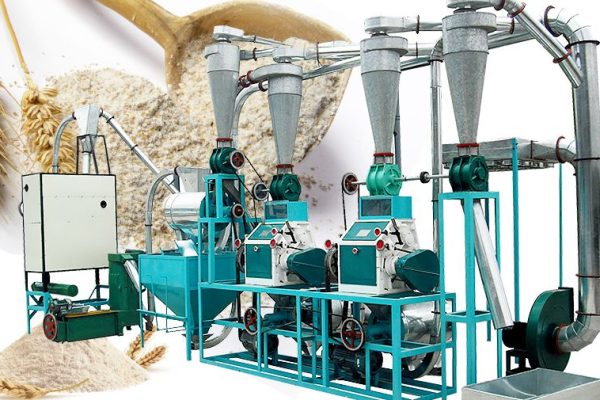Project Report For Wheat Mill
Introduction
The Project Report For Wheat Mill is as Follows.
Wheat is one of the world’s most significant grain crops, with an estimated yearly yield of 540 – 580 million metric tonnes. Wheat is a member of the grass family Gramineae and belongs to the genus Triticum. The two major wheat families farmed for food purposes today are common wheat and durum wheat. Wheat is the most valuable of all food grains, and it is widely used at all levels of processing, from whole to finely milled and sifted. Wheat flour is the most significant ingredient in the bakery, providing bulk and structure to most bakery items such as breads, cakes, cookies, and pastries.
Wheat is classified as hard wheat or soft wheat. Hard wheat has a higher protein content than soft wheat. It produces stronger flour, which makes more elastic dough, and is excellent for bread making when high leavened volume is required. Soft wheat contains less protein, resulting in a weaker dough or batter, and is excellent for baking cakes.

Processing Of Wheat Mill
Grain Cleaning :- Screenings are numerous forms of contaminants that are removed from the grain, as well as damaged, shrunken, and broken kernels. This screen filters out straw and other coarse debris, while the second screen filters out foreign elements like seeds.
Aspirator :- It removes minor contaminants from the wheat. The grain is directed across screens as air absorbs the dust and lighter.It moves into a disc separator, which is made up of discs that revolve on a horizontal axis. The discs’ surfaces are indented to trap individual grains of wheat while rejecting larger or smaller particles.
Scourer & Separator & Washer stoner :- The wheat is subsequently transferred to the scourer, a machine in which beaters attached to a central shaft aggressively throw the wheat against the surrounding drum, polishing each kernel and breaking off the kernel hairs. The wheat stream is next passed through a magnetic separator, which removes iron and steel particles contaminated during harvesting. In the water bath, high-speed rotators spin the wheat. Centrifugal force expels any excess water. Stones sink to the bottom and are collected. Lighter particles float away, leaving only the clean wheat.
Tempering :- Tempering is the process of adding moisture to wheat before it is ground. Tempering facilitates the separation of bran from endosperm and maintains a constant controlled level of moisture and temperature during milling . Three key aspects in tempering with various requirements in soft, medium, and hard wheat are the percentage of moisture, length of soaking, time, and temperature.
Grinding bin :- The wheat is hurled against finger-like pins by discs spinning at high speeds in the scourer aspirator. Any unsound kernel that is rejected is cracked down by the impact. A mill’s “first break” rolls, which are corrugated rather than smooth, break up into coarse particles. The broken wheat and bran particles are placed in a box-like sifter and shaken through a series of cloth or screens to separate the bigger from the smaller particles. Larger particles are shaken off the top, allowing the final flour to settle to the bottom.
Purifier :- The top fractions and endosperm particles are sifted by size and transported to different purifiers. The controlled passage of air in a purifier eliminates bran particles, while a cloth screen separates and grades coarse fractions based on size and quality. Four or five additional break rolls with successively final corrugations are occasionally employed to rework the coarse stock from the sifter and decrease the wheat particles granular middling’s as bran-free as possible. To separate the most flour (72.0%) from the wheat, sifters, purifiers, and rollers are utilized.
Market Potential Of Wheat Mill
The wheat milling machine market is expected to grow at a 3.9% CAGR. The market capitalization is predicted to rise from USD 1,232.2 million in 2023 to USD 1,806.5 million by 2033. The market was worth USD 1,185.9 million at the end of 2022, with a CAGR of 3.5%.
The wheat milling machine is an essential component of the contemporary food business. Wheat flour is used in a variety of dishes, including tortillas, bread, spaghetti, cakes, and pastries. These meals could not be manufactured on a wide scale without the wheat milling equipment.
One of the primary reasons driving the global market is end-user demand for energy-efficient equipment. In response to rising demand for gear that operates more efficiently in terms of energy usage, capacity, and cost, manufacturers are offering milling machines with energy-efficient features. As people become more conscious of the importance of energy conservation, higher standards for the performance of powder granulation machines are being set. This type of equipment must not only meet functional criteria, but it must also be energy efficient, durable, usable, maintainable, and serviceable.
